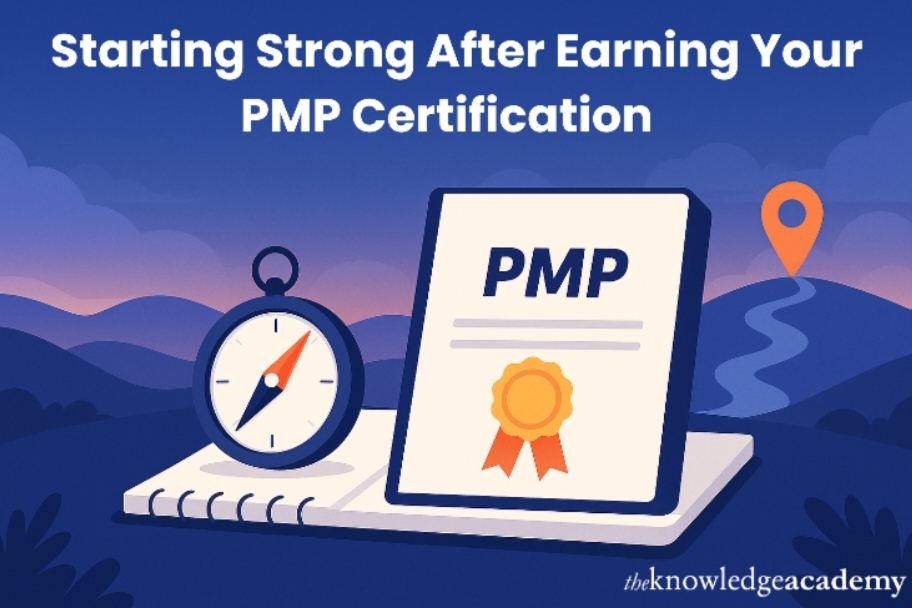So, you’ve just earned your PMP Certification. You’ve tackled a globally recognized exam, brushed up on frameworks and tools, and proven your project management knowledge. But what now? The certificate is in your hand, yet the real challenge begins once you enter the workplace or take on new responsibilities.
The initial days after your PMP Certification aren’t about relaxing. They’re about positioning yourself as a confident, capable project manager. Let’s explore how to make those initial months count and build a strong foundation for the career you’ve worked hard to prepare for.
Table of Contents
• Laying the Groundwork After Your PMP Certification
• Conclusion
Laying the Groundwork After Your PMP Certification
Your PMP certificate marks only a beginning. The true change occurs when you use your knowledge in a new or developing position. Here’s how to deliberately and with direction make those early days count:
Make Your PMP Visible
You deserve to be proud of the hard work you have done. Tell your company and network that you are PMP certified right now. Update your internal business bio, LinkedIn profile, and email signature, if you have one.
Still, more than visibility, it is about credibility. Starting a discussion with your new title will help. Using what you know, offer to help with process enhancements, shadow top Project Managers, or spearhead a smaller project. The best way to show your value is to use PMP techniques actively.
Bridge the Gap Between Theory and Practice
While PMP training provides disciplined procedures and vocabulary, real-world projects can take unexpected turns. Compared to the pristine PMBOK structure, your first few projects could seem like ordered chaos.
Flexibility is therefore essential here. Back off and watch how your company manages its initiatives. You will see where frameworks such as risk planning or scope management fit and where they should be modified. See this as your learning laboratory.
Strengthen Stakeholder Relationships
Whether your Gantt charts are perfect or not, things fall apart if you cannot relate to stakeholders. Here are some early techniques to build credibility and influence:
• Listen More Than You Speak: It’s tempting to prove yourself by offering solutions immediately, but take time to understand people’s goals, frustrations, and communication preferences.
• Map Expectations Clearly: Different stakeholders care about different outcomes. Identify what success looks like for each and communicate your plan with clarity.
• Follow Up Consistently: Regular updates and small wins help build trust. Even if progress is slow, being visible and accountable makes a difference.
Fine-Tune Your Communication Style
Not all communication styles are created equal. PMP may teach you the importance of communication management, but the next step is applying it with real people, personalities, and politics.
You’ll need to tailor your updates for different audiences. Senior managers want clarity and impact, while team members prefer guidance and consistency. Avoid jargon and instead use clear, direct language that shows you understand the project context.
Use Tools Like a Pro
Your PMP journey likely introduced you to various tools: risk registers, stakeholder matrices, work breakdown structures, and more. Now’s your chance to put them to work. Don’t try to use every single template or tool at once. Choose two or three that suit your current project’s size and complexity.
For instance, a simple RACI chart might make a big difference if your team struggles with unclear roles. Digital tools like Microsoft Project, Trello, or Jira can help you stay organized and visible. Experiment, but don’t overwhelm yourself. Choose tools that simplify your workflow, not complicate it.
Reflect, Adapt, and Grow
The early days are also about self-awareness. What went well? Where did you struggle? Did you get too caught up in documentation and miss an interpersonal cue? Or did a last-minute risk derail your timeline because it wasn’t captured?
Take notes, ask for feedback, and course-correct early. Continuous improvement isn’t just about process. It’s about how you lead, the questions you ask, and the assumptions you challenge.
Conclusion
Your PMP certification starts a new chapter, not the end. These early days set the tone for how others perceive you and how confident you feel in your abilities. Focus on learning the landscape, building relationships, and applying your knowledge in ways that work. Growth comes from doing, adjusting, and doing again. Consider The Knowledge Academy courses to advance your understanding of project delivery and leadership techniques.
Enjoyed this? Share this post with fellow fans and influencers, and be sure to check back regularly for the latest updates, insights, and news on all things simpcity!
